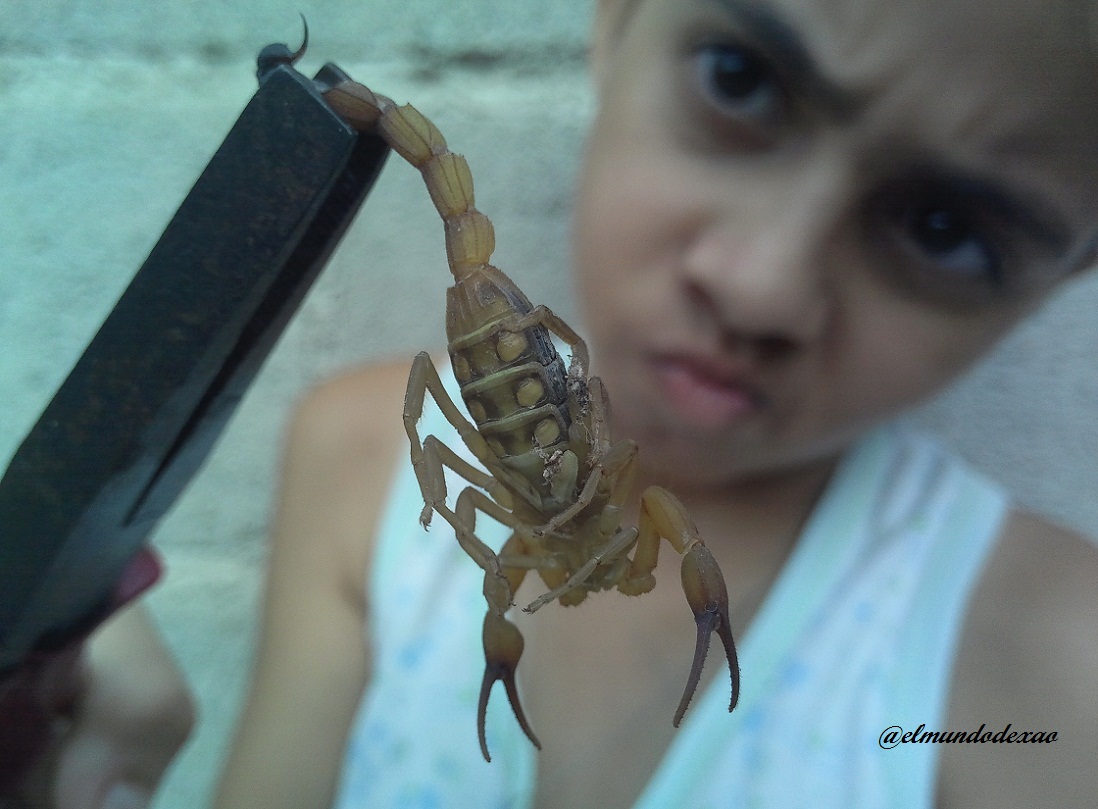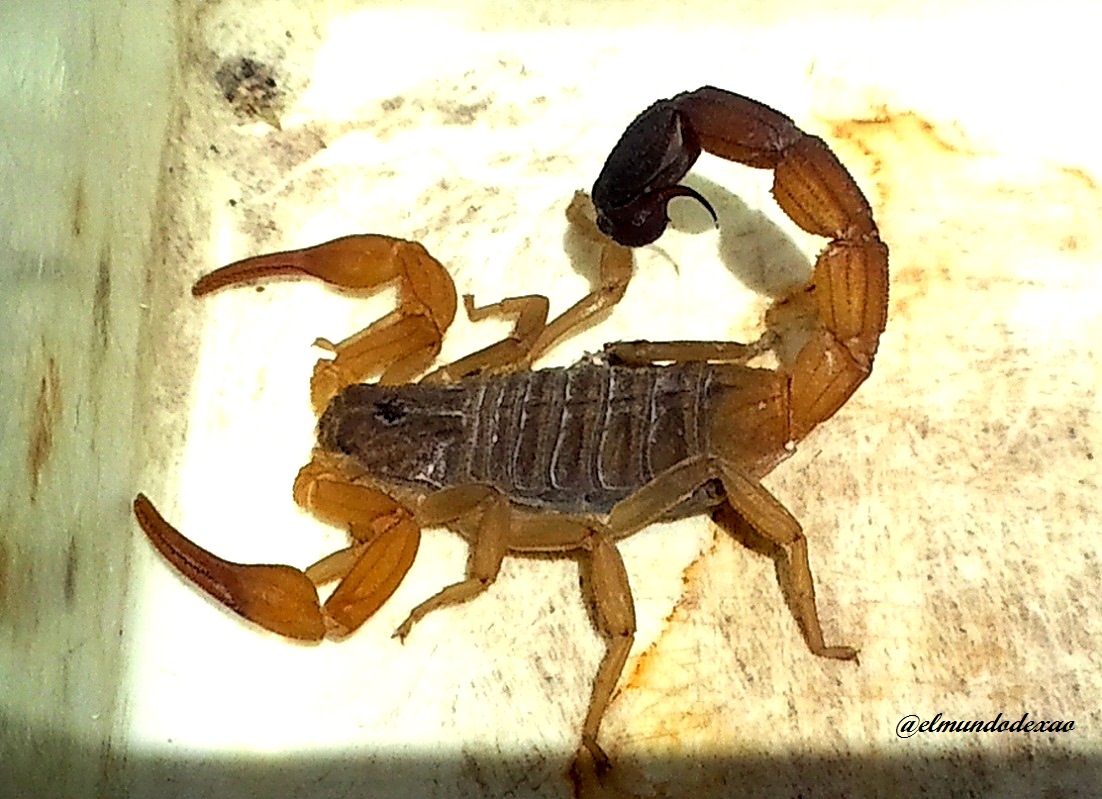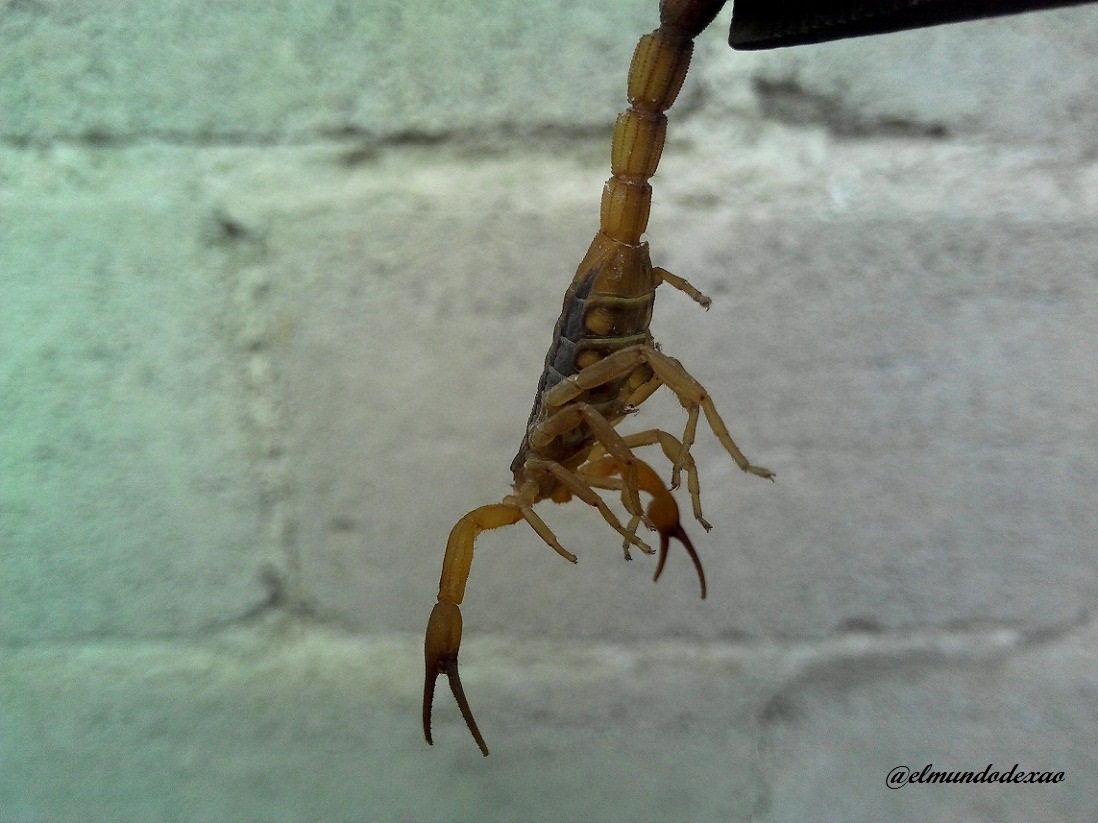Cazando Alacranes Para Identificar Su Peligrosidad…♥♥ Hunting Scorpions to Identify Their Danger...
Hola amigos de Hive, espero estén muy bien igual como lo estoy yo.
Hello friends of Hive, I hope you are very well as I am.
Hello friends of Hive, I hope you are very well as I am.
Por ejemplo: Cuando un niño sufre una picadura y logra ver que es un alacrán pero este se escapa; debería poder informar a quien lo auxilie, si el alacrán era venenoso o no.
Today I want to tell you how I differentiate if a scorpion is poisonous, and if it really has any importance to differentiate them. Usually we get scorpions almost daily at certain times of the year, they taught me to identify them as it is very important in case of suffering a sting. For example: When a child suffers a sting and manages to see that it is a scorpion but it escapes; He should be able to inform whoever helps him if the scorpion was poisonous or not.

¿Cómo identificarlos?
How to identify them?
How to identify them?
There are three ways to identify them but two of these, from my opinion are unsuccessful and then I explain why.
The First: "The Stinger" I consider this failed because we lack a vision with the ability to freeze images and zoom in. What do I mean? If I see a scorpion approaching me, no matter how hard I try, I will not be able to see that double pointed stinger. For those who do not know I clarify; A poisonous scorpion has a stinger that at the beginning of it there is a small protrusion through which it secretes the poison.
The second: "The Color" we cannot trust ourselves because of the color. The poisonous scorpion is supposed to be light and dark brown in color, whereas the harmless scorpion tends to be dark brown and black. This is like a bad joke of nature; the one that looks scary is the harmless and the most stylish is the dangerous. And why do I say that we cannot trust ourselves, this characteristic is not always fulfilled.

Pero en que consiste dicha diferencia:
El alacrán venenoso tiene pinzas largas y finas (podriamos definirlas como rectangulares).
El alacrán inofensivo tiene pinzas cortas y redondeadas (podemos definirlas ovaladas).
The third: "The tweezers", in my opinion this would be the most reliable feature. Unlike the first one, we can see it with the naked eye, since, if it approaches or moves away, we can notice this difference. But what does this difference consist of: The poisonous scorpion has long and thin claws (we could define them as rectangular). The harmless scorpion has short, rounded claws (we can define them as oval).

Un dato adicional es que si podemos atraparlo (vivo o muerto) lo llevamos para que lo observe quien nos atenderá.
Por supuesto que cuando digo muerto, no me refiero a triturado con el zapato, así el personal médico sabrá que procedimiento seguir.
Me despido y espero les sea de utilidad esta información.
Why is this good to know?
If we suffer the sting of a scorpion (in my case I carry a pair) and we can see that it is not poisonous, there is nothing to worry about. On the other hand, if it is, we must go quickly to a hospital. An additional fact is that if we can catch it (dead or alive) we take it so that whoever will attend to us can observe it. Of course, when I say dead, I don't mean shredded with the shoe, so the medical staff will know what to do next. I say goodbye and I hope this information is useful to you.

